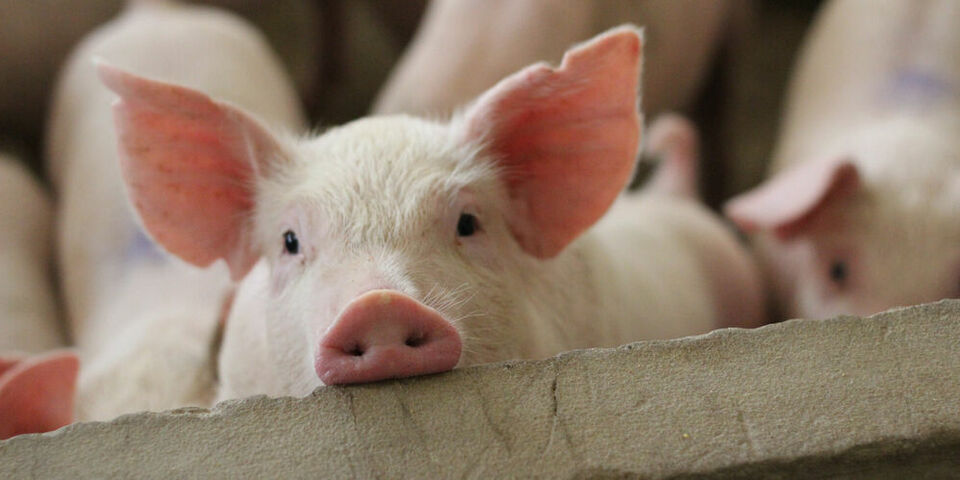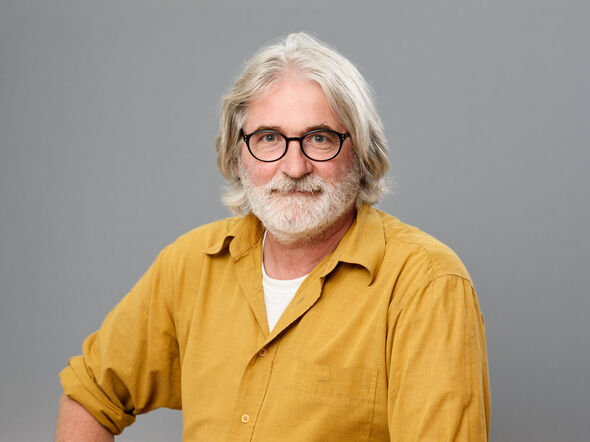Prof Talk | Pig heart, the end of the waiting list?
American surgeons have successfully transplanted a genetically-modified pig heart into a patient with a severe heart condition for the first time in history last week. This transplant of a ‘humanized’ heart is a pioneering feat of technology, TU/e professors Carlijn Bouten and Frans van de Vosse believe. But it won’t solve the urgent problem of donor shortage on a large scale, which is why they continue to work hard on alternative solutions.
A medical first. That is how the first transplant of a genetically-modified pig heart into a human patient has been described. A pig’s heart is very similar to a human heart; it has the same shape, the large blood vessels can be successfully connected and it has a similar heart rhythm. The heart was made a bit more ‘human’ in order to prevent a rejection response from occurring, says Carlijn Bouten, professor of Cell-Matrix Interactions in Cardiovascular Regeneration. “Researchers have added six human genes and removed four pig genes. That reduces the risk of rejection, but it also prevents the heart from growing.”
Decades of research have led to this transplant, Bouten stresses. “The step from pig to human remains a risk. In my field, surgeons have been successfully transplanting pig heart valves into humans for a number of years now. But these valves are specially treated and no longer contain living pig cells. This transplant, however, involves an entire organ. If this gene editing works, it will open up a whole new world of possibilities.”
The operation was a success, the heart appears to be working well and the patient is recovering, but there’s still a risk that the patient’s immune system might reject the organ or that other complications might occur. But even if this doesn’t happen, both Bouten and professor of Cardiovascular Biomechanics Frans van de Vosse don’t expect to see pig heart transplants on a large scale in the future. “In first instance, it’s still an experiment. But even when everything works technologically, we are still left with a serious ethical issue. Do we want pigs to become a depot of spare organs for humans? On the other hand: we’re also allowed to eat pigs. And should we mix organs from different species? To what extent should we be allowed to modify animals, and how you do raise these animals?”
Organ depots
In order to address these kinds of issues from various angles, Van de Vosse participated in the focus discussion group ‘Animals as donors,’ which is part of a social debate initiated by knowledge institute Rathenau and Kennislink. The media attention surrounding this transplant certainly encourages the ethical discussion, Bouten believes. “Does this mean that we will need to have entire stables in the future where we breed genetically modified animals under sterile conditions? Animals as organ depots? I have some reservations about that. This is a discussion that should be held society-wide, not just among researchers. Apart from that, this kind of transplant is a highly complex and expensive procedure, which is why I don’t expect large numbers of operations. I do however believe that it will be a springboard to various technological procedures that might actually lead to a solution to the problem of donor shortage.”
Both Van de Vosse and Bouten are in the process of developing a heart alternative. They currently collaborate in a large nationwide consortium on a hybrid heart: an artificial heart with a lining made of human tissue created in the lab. Van de Vosse says that the artificial heart will develop rapidly, especially since UMC Utrecht implanted an artificial heart in a patient last fall for the first time in the Netherlands. “It can save the lives of patients who can’t wait for a heart transplant due to a critical situation.”
Van de Vosse is also involved with TU/e spin-off LifeTec Group, which specializes in keeping organs alive, the heart in particular. “We try to increase the number of donor hearts. Currently, these donor hearts can sometimes no longer be used because of wrong timing or too large distances. We are working on different technologies that will keep a donor heart functioning outside the body. This will increase the number of suitable donor hearts and help people on donor lists.”
Mixing species
Keeping donor hearts alive longer also plays a role in another promising development in the wake of pig-to-human heart transplant. Bouten and her research group are also conducting research into a self-repairing heart. “To put it very roughly: this means removing a sick heart from a patient, letting it repair itself and then putting it back again. Or we can genetically modify a donor heart in such a way that it reduces the chance of rejection. That latter research takes place in collaboration with UMC Utrecht. An essential part of both situations is our ability to grow the organ for a period of time. The major advantage of regeneration is that we build on what the body can already do by itself. Because even though we have the technical ability to do so, mixing species does feel unnatural. Genetic modification of pigs still poses risks, which is why it’s definitely preferable to stay close to our ‘own’ animal species.”




Discussion